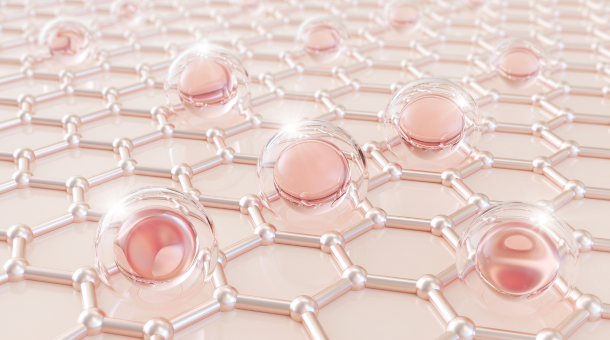As a skincare enthusiast, I’ve always been fascinated by the science behind skin regeneration. Our skin is the largest organ in our body, and it undergoes a continuous process of renewal and regeneration known as the skin cycle. In this ultimate guide The Ultimate Guide To Skin Cycles: Transform Your Skin Inside Out!, how often your skin replaces itself, factors that affect the skin cycle, and the importance of exfoliation in the skin cycle. Let’s go!
Understanding the Science Behind Skin Regeneration
The skin cycle is a complex process that involves the shedding of dead skin cells, the renewal of skin cells, and the regeneration of new skin cells. Skin regeneration is the process by which our skin replaces damaged or dead skin cells with new ones. The process of skin regeneration is essential for maintaining healthy skin, and it is influenced by various factors.
How Often Does Your Skin Replace Itself?
On average, the skin cycle takes about 28 days to complete, but this can vary depending on age, health, and lifestyle factors. For example, young children have a faster skin cycle, while older adults have a slower skin cycle. Additionally, factors such as sun exposure, smoking, and poor diet can affect the skin cycle, leading to slower skin regeneration and premature aging.
Factors That Affect Skin Cycle

Several factors can affect the skin cycle, including genetics, age, hormones, diet, lifestyle, and environmental factors. Genetics plays a significant role in determining the speed of the skin cycle, and some people naturally have a faster skin cycle than others.
Age and hormones also play a role in the skin cycle, as the production of collagen and elastin decreases as we age, leading to slower skin regeneration and the appearance of fine lines and wrinkles.
The Stages of the Skin Cycle – Shedding, Renewal, and Regeneration
The skin cycle consists of three stages: shedding, renewal, and regeneration. First, the top layer of dead skin cells is shed from the surface of the skin, revealing the fresh, new skin underneath.
The renewal stage involves the production of new skin cells, which migrate to the surface of the skin to replace the dead skin cells. Finally, the regeneration stage involves the production of collagen and elastin, which give the skin its elasticity and firmness.
How Long Does It Take Skin to Grow Back?
The time it takes for skin to grow back depends on various factors, including the depth of the wound, the severity of the injury, and the individual’s overall health. In general, superficial wounds heal within a few days, while deeper wounds can take several weeks to heal. The skin’s ability to regenerate also decreases with age, so older adults may take longer to heal than younger individuals.
The Importance of Exfoliation in Skin Cycle
Exfoliation is a crucial step in any skincare routine, as it helps to remove dead skin cells from the surface of the skin, allowing new skin cells to come to the surface. Regular exfoliation can also help to improve skin texture, unclog pores, and reduce the appearance of fine lines and wrinkles. However, it’s essential to use gentle exfoliants that won’t damage the skin or cause irritation.
Skincare Routine for Different Skin Types
Different skin types require different skincare routines to maintain healthy skin. For example, oily skin may require more frequent cleansing and exfoliation to prevent breakouts, while dry skin may require more hydration and moisturization to prevent flakiness and itching.
It’s essential to choose skincare products that are specifically designed for your skin type and to avoid products that contain harsh chemicals or fragrances that can irritate the skin.
Natural Ways to Enhance Skin Regeneration
There are several natural ways to enhance skin regeneration, including eating a healthy diet, drinking plenty of water, getting enough sleep, and reducing stress. Antioxidant-rich foods such as berries, leafy greens, and nuts can also help to protect the skin from damage and promote healthy skin regeneration. Regular exercise can also help to improve blood flow to the skin, which can enhance skin regeneration.
Skin Cycle Myths and Misconceptions
There are several myths and misconceptions surrounding the skin cycle, including the belief that exfoliating too often can damage the skin or that certain skincare products can speed up the skin cycle.
In reality, exfoliating too often can damage the skin and cause irritation, and skincare products cannot speed up the skin cycle. It’s essential to separate fact from fiction when it comes to the skin cycle and to choose skincare products and practices that are backed by science.
Conclusion and Final Thoughts
In conclusion, the skin cycle is a complex process that involves the shedding, renewal, and regeneration of skin cells. Understanding the science behind the skin cycle and the factors that affect it can help us to maintain healthy, youthful-looking skin.
By following a regular skincare routine that includes gentle exfoliation, hydration, and protection from the sun, we can support our skin’s natural regeneration process and achieve healthy, glowing skin at any age.
So, take care of your skin, and it will take care of you!
The Ultimate Guide To Skin Cycles: Transform Your Skin Inside Out!
As someone who has struggled with skin issues for years, I understand how frustrating it can be to try every product under the sun with little to no results. That’s when I began to research and understand the importance of skin cycles.
In this ultimate guide, we’ll explore the science behind skin regeneration, the factors that affect skin cycles, and the skincare routine for different skin types to help you transform your skin from the inside out.
Introduction to Skin Cycles
The human body is an incredible machine that operates on a cycle, and our skin is no different. Skin cycles refer to the natural process of shedding, renewal, and regeneration that the skin goes through to maintain its health and appearance.
The skin cycle is not a one-size-fits-all process, and it varies based on factors such as age, genetics, and environmental factors. However, understanding the science behind skin cycles is essential in achieving healthy, glowing skin.
Understanding the Science Behind Skin Regeneration
The skin is the largest organ in the human body, and it is constantly exposed to environmental factors such as pollution, UV rays, and harsh skincare products. To combat these external factors, the skin goes through a natural process of regeneration.
The skin has three layers: the epidermis, the dermis, and the subcutaneous tissue. The epidermis is the outermost layer of the skin, and it is responsible for protecting the body from external factors.
The dermis is the middle layer of the skin, and it contains collagen and elastin fibers that give the skin its elasticity. The subcutaneous tissue is the innermost layer of the skin, and it contains fat cells that provide insulation and cushioning.
How Often Does Your Skin Replace Itself?
The skin cycle varies based on age, genetics, and environmental factors. On average, the skin replaces itself every 28 days. However, as we age, the skin’s ability to regenerate slows down, and the skin cycle can take up to 50 days. Additionally, certain skin conditions such as acne and psoriasis can affect the skin cycle and cause it to take longer to regenerate.
Factors That Affect Skin Cycle
Several factors can affect the skin cycle, including age, genetics, environmental factors, and lifestyle choices. Age is one of the most significant factors that affect the skin cycle. As we age, the skin’s ability to regenerate slows down, and the skin becomes thinner and drier.
Genetics also play a role in the skin cycle, and certain genes can affect how the skin regenerates. Environmental factors such as pollution, UV rays, and harsh skincare products can damage the skin and affect the skin cycle. Lifestyle choices such as smoking, drinking alcohol, and a poor diet can also affect the skin cycle and contribute to premature aging.
The Stages of the Skin Cycle – Shedding, Renewal, and Regeneration
The skin cycle consists of three stages: shedding, renewal, and regeneration. The shedding stage occurs when the skin sheds dead skin cells, and it is replaced by new skin cells. The renewal stage occurs when new skin cells are produced, and the old skin cells are pushed to the surface of the skin. The regeneration stage occurs when the skin repairs and regenerates itself.
How Long Does It Take Skin to Grow Back?
The skin cycle varies based on several factors, including age, genetics, and environmental factors. On average, the skin takes 28 days to regenerate. However, as we age, the skin’s ability to regenerate slows down, and the skin cycle can take up to 50 days. Additionally, certain skin conditions such as acne and psoriasis can affect the skin cycle and cause it to take longer to regenerate.
The Importance of Exfoliation in Skin Cycle
Exfoliation is an essential step in any skincare routine, and it plays a vital role in the skin cycle. Exfoliation helps to remove dead skin cells that have accumulated on the surface of the skin, allowing new skin cells to regenerate.
It also helps to unclog pores, which can lead to acne and other skin issues. However, it is essential to be gentle when exfoliating, as harsh exfoliants can damage the skin and affect the skin cycle.
Skincare Routine for Different Skin Types
Different skin types require different skincare routines. Here is a skincare routine for each skin type:
Normal Skin
- Cleanse with a gentle cleanser
- Exfoliate twice a week
- Apply a moisturizer
Dry Skin
- Cleanse with a gentle cleanser
- Exfoliate once a week
- Apply a moisturizer
- Apply a hydrating serum
Oily Skin
- Cleanse with a foaming cleanser
- Exfoliate twice a week
- Apply an oil-free moisturizer
- Use a toner to control oil production
Combination Skin
- Cleanse with a gentle cleanser
- Exfoliate twice a week
- Apply a lightweight moisturizer
- Use a toner to balance oil production
Natural Ways to Enhance Skin Regeneration
There are several natural ways to enhance skin regeneration, including:
- Eating a healthy diet rich in antioxidants
- Staying hydrated
- Getting enough sleep
- Exercising regularly
- Using natural skincare products
Skin Cycle Myths and Misconceptions
There are several myths and misconceptions about skin cycles, including:
- Myth: You should exfoliate every day.
- Misconception: Skincare products can reverse the signs of aging.
- Myth: You should avoid oil-based skincare products if you have oily skin.
- Misconception: The more expensive the skincare product, the better it is.
Conclusion and Final Thoughts
Understanding the science behind skin cycles is essential in achieving healthy, glowing skin. By following a skincare routine that is tailored to your skin type and incorporating natural ways to enhance skin regeneration, you can transform your skin from the inside out.
Remember to be gentle when exfoliating, and don’t believe the myths and misconceptions about skincare. With a little patience and consistency, you can achieve the skin of your dreams.
Beauty Tips by Jaime
Looking for more beauty tips and advice? Check out the Beauty Tips by Jaime page of my blog and my TikTok page…, where I share my favorite skincare products and routines, as well as makeup and hair tips. With Beauty Tips by Jaime, you can achieve the beauty and confidence you deserve.
BLOG Why the skin goes through cycles
If you’re like me, you’ve probably looked at your skin and wondered why it might look radiant and healthy one minute then dry and yucky the next for no obvious reason. Science says we are not alone and our skin’s unpredictable nature is perfectly normal.
Let’s go deeper into the scientific explanation of the skin cycle to explain its function, its causes, and how it impacts your skin. Basically keep reading to find out what the heck is going on with your skin. Let’s go…
If you’re as curious as I am, if you’re curious about what’s going on with your skin
What is the Skin Cycle?
Skin cycle is a process where the new skin cells are formed at the deepest layer of the
epidermis, The new cells make their way up to the surface as the mature cells as they flake off. Age, hormones, skin conditions/health and stress all can affect the skin cycle. On average, this sloughing and renewal takes 5 to 6 weeks.
Age and skin turnover
As we age the rate of cellular ton of our slows down considerably.
At the age of 19–21 the skin cycle is estimated to be 14–21 days. A middle aged adult cycle is approximately 28 days. The cycle slows down as we age, reaching 45–60 days in our 40s and 50s in her 50s and 60s, it can slow even further to 60–90 days.
40 & 50s the cycle slows down to 45–60
As we age, our skin cycle slows down, dead cells accumulate on the surface of the skin, causing sagging, fines lines and wrinkles. The accumulation of dead skin cells can also trap bacteria or discolored cells, resulting in blemishes and skin discoloration,
Beauty By Jaime tip: when starting a new skin care regimen, wait 1 -3 skin cycles to give the skin care a chance to work. this depends on the length of your skin cycle and the product you are using.
medical grade Cosmeceutical skin care is designed to work on deeper layers of the skin so immediate results are not always seen. over-the-counter skin care works on the surface of your skin so it may immediately feel soft but long-term benefits will not be comparable..
Ultimate Guide To Skin Cycles Ultimate Guide To Skin Cycles Ultimate Guide To Skin Cycles Ultimate Guide To Skin Cycles Ultimate Guide To Skin Cycles Ultimate Guide To Skin Cycles Ultimate Guide To Skin Cycles Ultimate Guide To Skin Cycles Ultimate Guide To Skin Cycles Ultimate Guide To Skin Cycles Ultimate Guide To Skin Cycles Ultimate Guide To Skin Cycles Ultimate Guide To Skin Cycles






